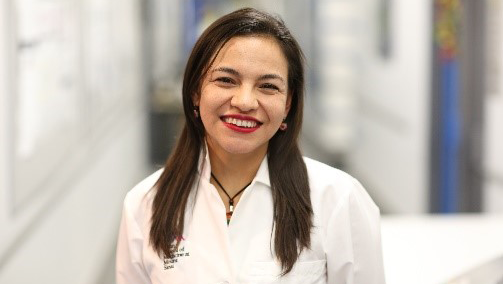Inside Neuroscience: Building Upon Success in Gene Therapy
Gene therapy, or the process of transplanting functional DNA in the place of missing, damaged, or defective DNA, became reality in 2017 with the Food and Drug Administration (FDA) approval of Luxturna (voretigene neparvovec-rzyl) to treat a form of inherited blindness. The maturation of the gene therapy field, which supported this first commercial product, has continued with the cutting-edge projects revealed during the “Realizing the Potential of Gene Therapy for Neurological Disorders” press conference at Neuroscience 2018.
“The state of gene therapy in 2018 is strong, especially for neurological disorders,” said Fredric Manfredsson, assistant professor of translational science and molecular medicine at Michigan State University and moderator of the press conference. Manfredsson shared that there are over 50 ongoing clinical trials in ophthalmology/neurology and new, positive results are beginning to manifest.
“We’re now starting to see reports of efficacy in these clinical trials, and this is of course the quintessential result we want to see as we move forward in clinic,” he explained.
There’s still more to be done before gene therapy can be deployed for use throughout the body, and more research before additional therapies can translate to human clinical trials. However, the work highlighted below is paving the way for such potential treatments.
Using GBA1 to Slow Parkinson’s in Mice
Parkinson’s disease causes neural degeneration. The condition leads to the death of dopamine-producing neurons in a part of the brain called the substantia nigra, which is associated with the misfolding of a protein called alpha-synuclein. Although the origins of the disease are poorly understood, β-glucocerebrosidase 1 (GBA1) mutations are the most common risk factor, showing up in as many as 10 percent of patients. When the gene functions correctly, it produces lysosomes, which dispose of waste within the cell; waste builds up when the lysosomes are not produced.
To potentially mitigate or even halt the process of alpha-synuclein misfolding, a new gene therapy being tested in mice aims to “infect” the corresponding GBA1 gene to produce more glucocerebrosidase. Even those Parkinson patients without the GBA1 mutation could benefit from increased lysosomal activity.
Researchers genetically engineered viruses with the healthy GBA1 gene encoded within it in order to increase glucocerebrosidase activity and therefore the production of lysosomes. Once injected, this therapy resulted in the clearing of misfolded alpha-synuclein in the mice. This, in turn, prevented further degeneration and progression of the disease.
These trials showed that, for the subjects, “we can slow down, and even ideally arrest, disease progression of Parkinson’s,” explained Jose Lanciego, staff scientist at FIMA-University of Navarra, Spain, and lead author. Thus, this process has enormous potential for human subjects and will next be tested in primates — a continuation of ongoing research with the animal.
A New Spinal Delivery System to Treat ALS
Amyotrophic lateral sclerosis (ALS) is a degenerative neurological disorder that affects the brain and spine. There are no known treatments. Gene therapy in the past has attempted to treat ALS but faced difficulty successfully impacting the entire spinal cord.
About 20 percent of patients in familial cases are caused by the mutated superoxide dismutase 1 (SOD1) gene. A new spinal vector delivery technique developed by Martin Marsala, professor in the Department of Anesthesiology at UC San Diego and senior author on the paper highlighted during the press conference, was effective at permeating the brain and spinal cord of a mouse, a treatment that silenced the SOD1 gene throughout the nervous system. The injection was subpial, i.e., through injections into the fluid sac that envelopes the brain and spinal cord.
As a result, motor function was not lost, neurons in the spinal cord and areas of the brain were preserved, and there was less SOD1 protein folding that causes neurological damage. “We saw in treated animals...the extension of life was about 80 days,” said Marsala.
The researchers initiated treatment in adult mice, which is one of the first times that this type of gene delivery has been effectively achieved in adult animals. Non-human primate studies are being developed.
Nearing Human Clinical Trials for ALS Treatment
In another treatment to target the SOD1 gene that is connected to ALS, scientists developed a gene therapy approach to target the mutation of that gene. The treatment silences SOD1 in neurons and astrocytes. The therapy, called AVXS-301, was injected directly into the spinal cord. A higher dose could elongate a mouse’s life by as much as 70 days even after just a one-time administration.
Gretchen Thomsen, principal scientist at AveXis, is the lead author on the study. “We have one of the largest extensions in survival reported to date,” she explained, even when using a form of ALS that is extremely aggressive. The researchers also tested the gene therapy in an adult non-human primate, which resulted in similarly positive effects.
There have now been multiple studies in different species to test the efficacy of AVXS-301, and the scientists say the treatment is now suitable to move forward in clinic for human subjects. This would be a first in gene therapy for ALS treatment.
Gene Therapy to Treat Batten Disease in Children
Batten disease is a rare neurological disorder that manifests in young children, as early as 18 months old, and results in death before the child reaches adulthood. A mutation in the ceroid-lipofuscinosis neuronal protein 6 (CLN6) gene is a known cause of Batten disease, specifically when it does not produce the corresponding CLN6 protein that functions as the cell’s waste removal (a lysosomal disorder, like Parkinson’s).
In a collaboration between the labs of Dr. Jill Weimer at Sanford Research, Sioux Falls, South Dakota, and Dr. Kathrin Meyer at Nationwide Children’s Hospital in Columbus, Ohio, the scientists used a gene-therapy technique to insert a healthy copy of the CLN6 gene into mice. A single spinal injection successfully transported the corrected DNA throughout the neural system and led to significant improvement of neural activity and motor function.
The treatment has been tested in rodents, non-human primates and is now currently in human clinical trials. Kathrin Meyer, principal investigator at the Center for Gene Therapy, was the senior author on the study.
“To date, this treatment is very well-tolerated in all patients that have been treated so far,” she said. Additionally, Amicus has recently licensed the program for future development.
Looking Ahead
The promise of gene therapy is becoming a reality. With one product on the market and several more in clinical trials, diseases that recently seemed unconquerable appear susceptible to the power of the maturing field. “The research presented [here] represents important and exciting steps toward being able to prevent and treat disorders that currently have no cure,” said Manfredsson.
The power of gene therapy combined with the neuroscience community’s unwavering focus makes it only a matter of time before previously “incurable” diseases may become simply chronic, manageable conditions.



















